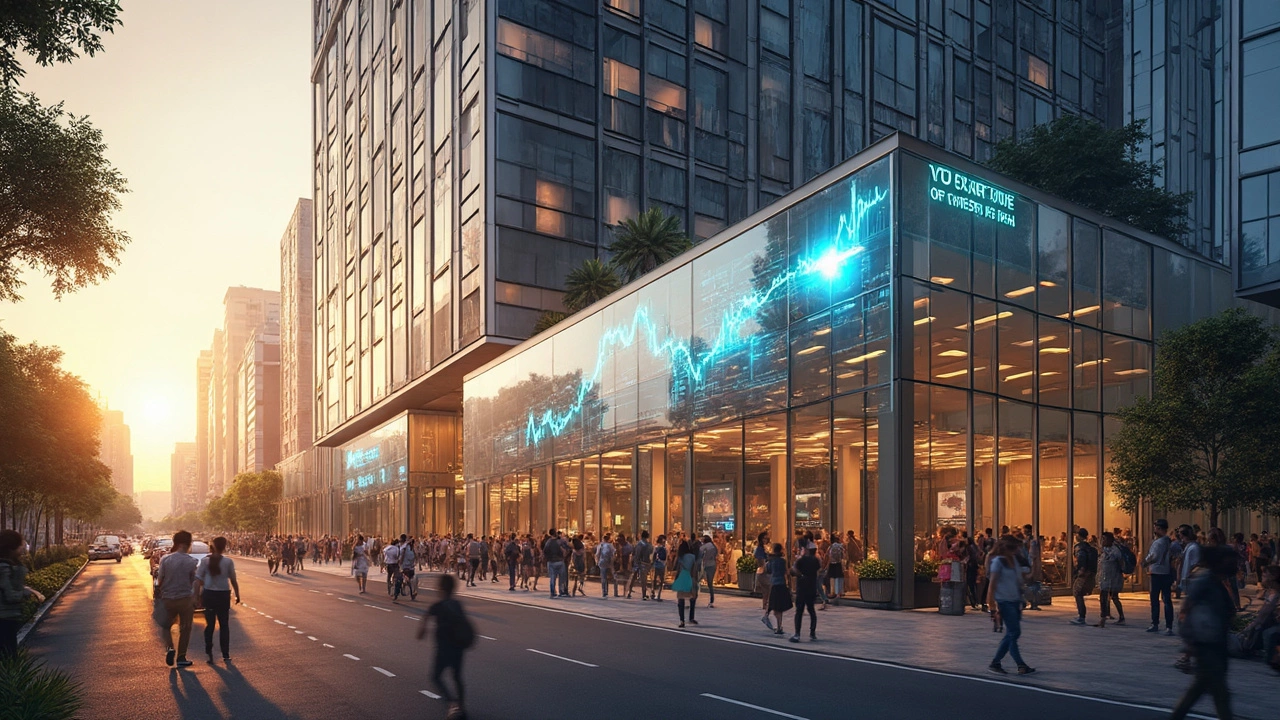Commercial Real Estate: Quick Tips for Buyers, Sellers & Renters
Thinking about a shop, office, or warehouse? Commercial real estate can boost your income, but it also comes with its own set of rules. Below you’ll find straight‑forward advice that helps you decide if a property fits your goal, how to price it, and what to watch for in a lease.
How to Spot a Good Commercial Deal
First, ask yourself what the property will actually do for you. Is the rent covering the mortgage? Does the location draw the right customers or employees? A quick cash‑flow test works well: take the expected monthly rent, subtract mortgage, taxes, insurance, and maintenance. If the number is positive, the deal is worth deeper review.
Next, verify the tenant mix. A single tenant that pays a long‑term lease is low risk, but a mix of short‑term tenants can boost your flexibility. Look at the lease expiration dates – you don’t want all contracts ending at once, as that could leave the building empty.Don’t forget the condition of the building. Older structures may need big repairs that eat into profit. Get a professional inspection and ask for a detailed estimate. Some buyers negotiate a lower price or ask the seller to fix problems before closing.
Lastly, compare the price per square foot with nearby properties. If it’s significantly higher, ask why. Maybe the site has better visibility or parking, but if no clear advantage shows up, you might be overpaying.
Understanding Lease Terms and ROI
Leases in commercial real estate are more complex than residential ones. Look for key clauses like rent escalations (how much rent will rise each year), triple‑net terms (who pays for taxes, insurance, and maintenance), and early‑termination rights. A triple‑net lease often pushes most costs to the tenant, which can improve your net return.
Calculate ROI using the simple formula: (Annual Net Income ÷ Total Investment) × 100. If you spend $500,000 on a property and net $40,000 a year after all expenses, your ROI is 8 %. Many investors aim for 8‑12 % on commercial deals, but the target changes by market and asset type.
Don’t ignore the cap rate, another common metric. It’s the same as ROI but uses the property’s current market value instead of purchase price. A higher cap rate usually signals higher risk, while a lower one suggests a stable, low‑risk investment.
When you’re a tenant, read the rent‑increase schedule carefully. A 3 % annual increase can look small, but over ten years it adds up. Also, check what improvements you’re allowed to make – some landlords cover only structural upgrades, leaving interior finishes to you.
Whether buying or renting, keep an eye on the local market trends. Growing job numbers, new infrastructure projects, or zoning changes can boost demand for commercial space, pushing rents and values up.
In short, treat a commercial property like a small business. Do the math, inspect the building, and understand the lease before you sign. With the right numbers and a clear plan, commercial real estate can become a steady income source or a solid long‑term investment.
Top Websites to Find Commercial Property Listings in 2025
by Arjun Mehta Oct 24 2025 0 Commercial PropertyDiscover the top commercial property websites for 2025, compare features, fees, and coverage, and learn how to use them effectively to find your next investment.
READ MOREHow to Sell a Commercial Property: Step‑by‑Step Guide
by Arjun Mehta Oct 22 2025 0 Commercial PropertyA step‑by‑step guide on how to sell a commercial property, covering valuation, marketing, negotiation, taxes, and closing tips for Australian owners.
READ MOREHow to Find Investors for Commercial Real Estate: Proven Strategies & Practical Tips
by Arjun Mehta Jul 4 2025 0 Real EstateLooking for investors for your commercial real estate deal? Discover detailed, actionable strategies to connect with serious property investors, build trust, and close the deal.
READ MOREGood Cash Flow on a Rental Property: What You Really Need to Know
by Arjun Mehta Jun 12 2025 0 Commercial PropertyWondering what makes for good cash flow on a rental property? This article breaks down what terms like 'good cash flow' actually mean, why it's different for every investor, and what numbers you should look at before buying. We'll share straightforward tips for running the numbers, show you how to spot red flags, and explain some practical ways to boost your returns. By the end, you'll have a real-world grip on how to judge cash flow and make smarter commercial property moves.
READ MORECommercial Real Estate in a Recession: What Actually Happens?
by Arjun Mehta Jun 7 2025 0 Commercial PropertyWhen the economy stumbles and businesses tighten their belts, the commercial real estate market doesn’t come out unscathed. This article explains what really happens to office buildings, retail spaces, and warehouses during a recession, and how it shakes up prices, demand, and sales strategies. We’ll break down the ripple effects for both buyers and sellers, plus share some unexpected opportunities. If you’re thinking about buying, selling, or holding on to commercial property, you’ll find real, actionable advice here. No jargon—just the facts you actually need.
READ MORECommercial Real Estate: Why Skipping This Investment Might Be the Smart Move
by Arjun Mehta May 24 2025 0 Commercial PropertyThinking about putting your money into commercial real estate? There are reasons to hold back. This article breaks down the risky side of investing in offices, shops, or warehouses, including hidden costs and the headaches of managing tenants. Get real stories about market changes, liquidity problems, and how economic swings can sting investors. Make sure you know what you’re getting into before you commit your cash.
READ MORERule of Three Commercials: The Secret Sauce in Selling Commercial Property
by Arjun Mehta May 8 2025 0 Commercial PropertyThe rule of three commercials is a simple yet powerful trick in commercial property sales that smart sellers use to boost their chances. It's not some buzzword – it's a practical method that gets actual results. This article breaks down how the rule works, why it matters, and how property owners and agents can use it to score better deals. You'll find out about the psychology behind it, real-life examples, and mistakes to avoid. If you're thinking of selling commercial property, miss this strategy and you could leave money on the table.
READ MOREFastest-Growing Commercial Real Estate Company in 2025
by Arjun Mehta Apr 4 2025 0 Commercial PropertyIn 2025, discovering the fastest-growing commercial real estate company can provide valuable insights into industry trends and investment opportunities. This article delves into the factors behind the rapid growth, such as technological adoption and innovative strategies. We explore how this company stands out in the competitive property market and what it means for potential investors. By analyzing key metrics, we offer a guide for understanding the evolving landscape of commercial real estate.
READ MOREWhat Makes Commercial Real Estate So Lucrative?
by Arjun Mehta Mar 26 2025 0 Commercial PropertyCommercial real estate offers various ways to make money, from renting office spaces to selling mixed-use properties. It's not just about buying and selling; there's potential in leasing arrangements and development projects too. Understanding market trends and location can significantly boost profitability. This article dives into the specific sectors within commercial real estate that yield the highest returns.
READ MORELargest Commercial Real Estate Giants: Who Tops the Chart?
by Arjun Mehta Mar 22 2025 0 Commercial PropertyExploring the largest players in the commercial real estate market gives insight into how they shape our cities and economies. Let's find out who holds the title of the biggest in the industry, what makes them stand out, and why they matter. Get tips on what to look for in choosing the right real estate company, especially when buying or selling commercial properties. By understanding these industry leaders, you'll gain a better perspective on real estate dealings. This overview is crucial for anyone involved in property businesses.
READ MOREUnderstanding Cap Rates in Commercial Real Estate Investing
by Arjun Mehta Dec 12 2024 0 Commercial PropertyCap rate is a crucial metric in commercial real estate investment, reflecting the expected rate of return for an investor. It helps assess the risk and return potential of a property. This article explores what constitutes a good cap rate, factors influencing it, and how it varies across different property types and markets. Understanding these nuances is essential for making informed investment decisions.
READ MORE









